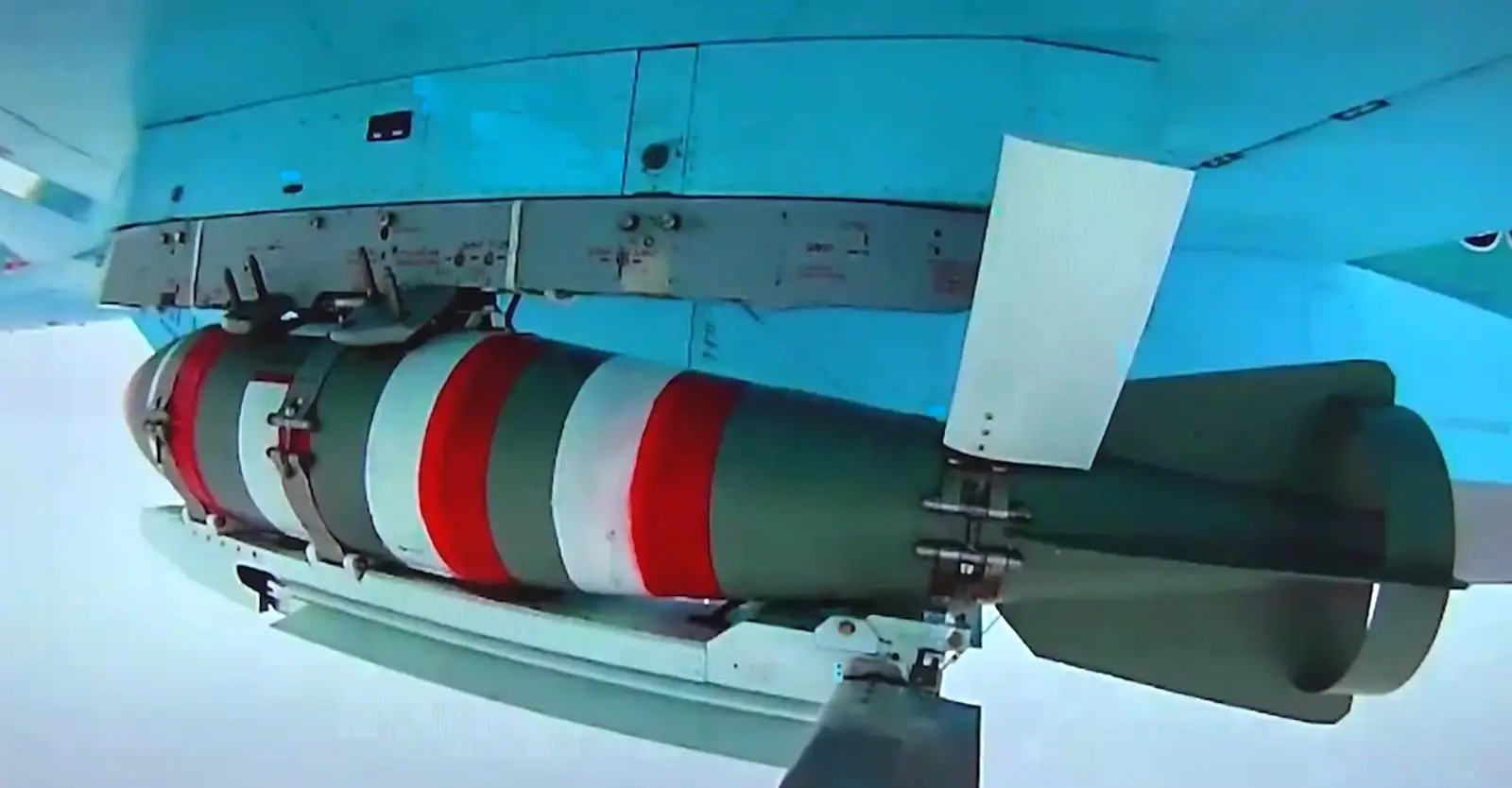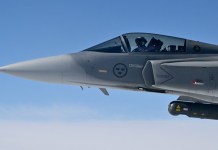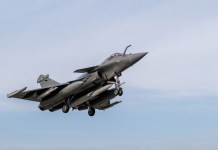The deputy chief of Ukraine’s Defense Intelligence (HUR), Vadym Skibitsky, told Reuters on November 14 that the Russian military industry aims to manufacture around 120,000 precision-guided glide bombs by the end of the year, including about 500 newly developed extended-range glide bombs.
Skibitsky estimates that Russia currently launches 200–250 glide bombs every day.
Most of the glide bombs used by Russia are unguided Soviet-era gravity bombs fitted with glide kits to generate aerodynamic lift and simple satellite navigation modules for accurate guidance.
As a result, they cost a fraction of long-range cruise missiles or purpose-built, short-range, precision-guided air-to-ground strike weapons with terminal seekers.
UMPK Bombs Development History
Kitted legacy bombs are referred to as UMPK bombs. The use of glide kits extended their strike range severalfold compared to gravity-drop range, which depended solely on release speed and height.
Russian forces started using UMPK bombs near the start of 2023. By April 2023, there were reports that Russia was using 20 UMPK bombs every day.
Initially, UMPK bombs had a range of 40–50 km and required target coordinates to be fed before being fitted on launch aircraft pylons. By May 2023, the bombs’ range had been extended to around 70 km through improvements to the glide kits.
Around September 2023, Russian forces started using UMPK-kitted bombs that facilitate targeting in the air before release, increasing their versatility.
To begin with, Russian forces developed glide kits for 500-kg gravity bombs. With time, they developed kits for 250-kg, 1,500-kg, and 3,000-kg bombs.
Production Ramp-Up & Stepped Up Usage
In December 2023, RIA Novosti reported that the Russian Aerospace Forces would begin mass training of pilots in the use of UMPK bombs, a clear signal that Russia planned to step up production and use of the bombs.
A RIA Novosti interlocutor stated, “A batch of front-line Su-34 bombers was recently transferred to one of the training centers of the Russian Aerospace Forces, which will be used for mass training of pilots in the use of aerial bombs with UMPK that have already proven themselves in the special operation zone in Ukraine. This will increase the number of pilots who can use these munitions and increase strikes with ‘smart aerial bombs’ in the Northern Military District zone against Ukrainian military targets,”
The Fighterbomber Telegram channel reported that the Su-34 was being upgraded with software that would make it possible to release UMPK bombs from all types of maneuvers.

Also, upgraded software would facilitate the release of four UMPK bombs simultaneously.
Usage Surge
A massive surge in the use of UMPK bombs is one of the factors believed to have helped Russian forces crush Ukrainian resistance in the Avdeevka sector.
The Russian Ministry of Defence announced in March 2024 that production of FAB-500 aerial bombs had multiplied, production of the FAB-1500 had doubled, and Russia had started mass production of three-tonne FAB-3000 high-explosive aviation bombs. “FAB” is a reference to “high-explosive bomb.”
By January 2024, there were reports of Russia using 130 bombs in a day.
From February 1 to February 26, the Russian Armed Forces used more than 1,200 bombs, including 151 in one day from February 16 to 17.
Lack Of Effective Defense
Ukraine has yet to develop an effective counter to UMPK bombs because of their low radar and thermal signatures, as well as limited flight time. In contrast, cruise missiles fly for longer durations and have easily detectable thermal and radio-frequency signatures.
So far, Ukraine’s most effective defence against UMPK bombs has been electronic warfare that jams SATNAV signals.
UMPK Accuracy Degradation
In February, reports from usually reliable sources suggested that Russian forces had lost a significant battlefield advantage—their ability to deliver precision strikes using UMPK-equipped glide bombs.
On February 25, 2025, Russian military blogger Fighterbomber noted that Russian Su-34s continued to attack Ukrainian targets using UMPK bombs with the same frequency as before; however, these munitions were now missing their intended marks. He attributed this decline in accuracy to Ukrainian satellite navigation (SATNAV) jamming efforts.
“They do not hit,” Fighterbomber stated, emphasizing that Ukrainian forces have developed portable and mobile electronic warfare stations. These stations are reportedly deployed extensively along the line of contact, rendering satellite-based navigation systems for various munitions, including UMPK bombs, ineffective.
However, in April 2025, Fighterbomber reported that Russia had introduced an upgraded variant of its UMPK glide and navigation kit. The new version features an improved Kometa satellite navigation (SATNAV) module that addresses vulnerabilities found in the Kometa-M units fitted to earlier UMPK kits.
Eventually, Ukrainian forces will find a way to jam the upgraded Kometa SATNAV module, but equally surely, Russian forces will once again address the vulnerability exploited.
Longer-Range UMPKs
Reports of UMPK bomb strikes at ranges of around 100 km first emerged in June. A Ukrainian official claimed that the longer-range bombs were being dropped from an altitude of 9,000 m and speeds between 700–800 km per hour.
In October, a bomb reportedly struck a target in Nikolay, approximately 60 km from the frontline, after flying 120–150 km from the drop point. Since then, Russian forces have struck targets in the Odessa region at similar ranges.
In July, the Kharkiv Regional Prosecutor’s Office reported that Russian forces had struck targets in the region using the UMPB-5 glide bomb.
According to information posted online, the weapon is essentially a 250-kg (FAB-250) bomb fitted with a rocket/jet engine, thereby converted into a short-range cruise missile.
It can be deployed using a fighter aircraft (Su-34/Su-30/Su-35) or, and this is very interesting, a 300-mm MLRS such as the Tornado-S.
The range of the UMPB-5 depends on the method of deployment:
~ about 90–120 km when dropped from an aircraft at normal altitude (10–12 km, speed 900–1000 km/h);
~ up to 145–160 km when dropped from high altitude and higher speed (~13,500 m, 1250–1350 km/h);
~ from 270 to 320 km if used as a second (gliding) stage for a 300-mm MLRS.
At this point in time, it is not clear whether the UMPB-5 glide bomb is rocket or jet-engine-assisted. It is conceivable that the MLRS-launched variant uses a rocket booster, while the air-launched variant uses a jet engine.
Mass Production Key To The Effectiveness Of UMPK Bombs
The use of a jet engine to increase strike range to 200 km, or even 400 km, will increase the thermal and radio-frequency signatures, as well as the flight time, of the bombs, increasing vulnerability to air-defense missile systems.
Russia can, however, mitigate this vulnerability through a high rate—and consequently low cost—of production, facilitating mass strikes that overwhelm Ukrainian defenses.
- Vijainder K Thakur is a retired IAF Jaguar pilot, author, software architect, entrepreneur, and military analyst.
- Follow the author @vkthakur




